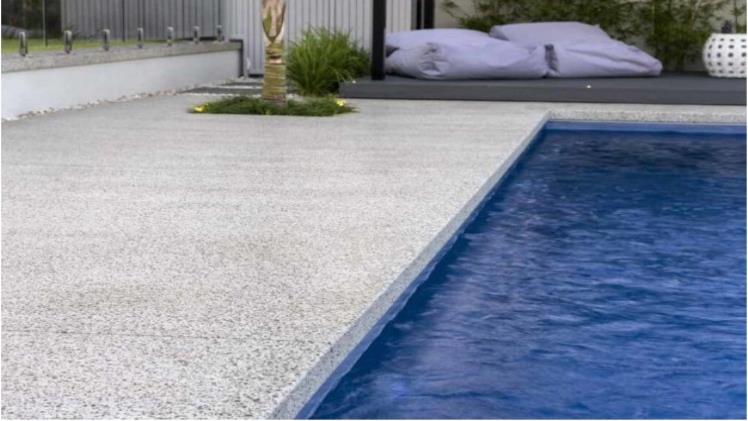Choosing The Right Materials For Pool Deck Resurfacing Projects

A pool area is more than just a place to swim. It’s a space for relaxation, gatherings, and summer memories. Over time, exposure to sun, water, and foot traffic can damage the deck surface. Pool deck resurfacing offers a solution, breathing new life into worn or outdated spaces. Selecting the right materials is key to achieving a durable, safe, and visually appealing result. Every choice impacts both the look and functionality of your deck.
Popular Options For Pool Deck Resurfacing
Pool deck resurfacing involves applying a new surface layer over the existing deck. Common options include stamped concrete, pavers, natural stone, and specialized coatings. Each material has unique benefits. Stamped concrete offers the look of stone or tile with a smoother finish. Pavers provide flexibility and easy repair. Natural stone creates a high-end, luxurious appearance. Specialized coatings can add texture and slip resistance. The choice depends on durability needs, maintenance expectations, and personal style. Selecting the right material ensures the resurfacing lasts longer while remaining attractive.
Durability Considerations In Pool Deck Resurfacing
When evaluating materials, durability is crucial. Pool decks face constant exposure to water, chemicals, and UV rays. Concrete and stone are highly resilient, resisting cracks and fading. Coatings and overlays may require more maintenance but offer additional design flexibility. Slip resistance is another important factor. Materials must handle wet conditions safely without sacrificing aesthetics. Durability considerations influence both long-term costs and user safety. A well-chosen material in your pool deck resurfacing project ensures years of reliable use without frequent repairs.
Aesthetic Appeal And Pool Deck Resurfacing
Visual appeal plays a major role in material selection. Pool deck resurfacing allows homeowners to enhance the overall design of their outdoor space. Colors, textures, and patterns contribute to the ambiance. Light colors can reduce heat absorption, making the deck more comfortable to walk on. Patterns such as herringbone or mosaic can add sophistication and style. Integrating materials with the surrounding landscape or pool design creates a cohesive look. The right aesthetic choice in your pool deck resurfacing project elevates the entire outdoor experience.
Budgeting For Pool Deck Resurfacing Projects
Cost is always a factor in material selection. Pool deck resurfacing expenses vary widely depending on the chosen material and installation complexity. Concrete overlays tend to be budget-friendly, while natural stone or decorative pavers can be more expensive. Maintenance costs should also be considered. Some surfaces need sealing or refinishing over time. Planning a realistic budget ensures the project meets both design goals and financial expectations. Smart budgeting makes your pool deck resurfacing project both beautiful and practical.
Eco-Friendly Materials For Pool Deck Resurfacing
Sustainability is becoming more important in home projects. Some materials for pool deck resurfacing are environmentally friendly, such as recycled concrete or permeable pavers. These options reduce waste, improve drainage, and minimize environmental impact. Choosing eco-conscious materials can also enhance the overall value of the property. A greener approach ensures your pool area is not only stylish and functional but also responsible.
Conclusion
Selecting materials for pool deck resurfacing is a balance of durability, aesthetics, cost, and maintenance. Each choice shapes the look and functionality of the space for years to come. From stamped concrete to natural stone, every option has unique benefits. Careful consideration of these factors ensures your deck remains safe, attractive, and long-lasting. A thoughtfully resurfaced pool deck transforms any backyard into a retreat worth enjoying every season.



